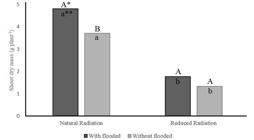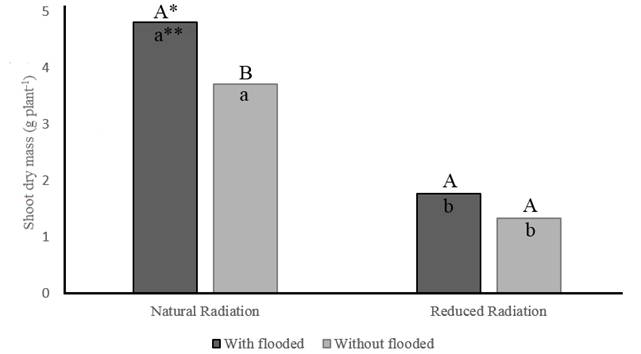ABSTRACT:
The objective of the study was to evaluate the efficiency of herbicides use in the control of tough lovegrass according to the availability of solar radiation and the presence or absence of flooded. Two experiments were conducted in a completely randomized design, in a 2x2x4 and 2x2x5 factorial scheme, where factor A was equivalent to the environment (natural or reduced radiation); factor B to water condition (with a 2 cm flooded or without); and, factor C the herbicides: cyhalofop butyl (315 g ha-1), glyphosate (1080 g ha-1), cyhalofop butyl + glyphosate (315 g ha-1 + 1080 g ha-1) and control (without application) in the first experiment. In the second experiment, the herbicides used were cyhalofop butyl (315 g ha-1), glyphosate (1080 g ha-1), sethoxydim (184g ha-1), imazethapyr (106 g ha-1) and control (without application). Glyphosate efficiently controls plants of tough lovegrass with four tillers (>90%), being superior to cyhalofop, imazethapyr and sethoxydim; independently, of resource conditions. Reduction in the availability of solar radiation generates less shoot dry mass production from the weed, and improves the control only by imazethapyr and cyhalofop. In general, a flooded condition does not affect tough lovegrass control by herbicides.
Key words:
flooded; glyphosate; pasture; shading; weed control

 Integrated management of tough lovegrass (Eragrostis plana Nees): associating chemical control tools and plant physiology
Integrated management of tough lovegrass (Eragrostis plana Nees): associating chemical control tools and plant physiology Thumbnail
Thumbnail
